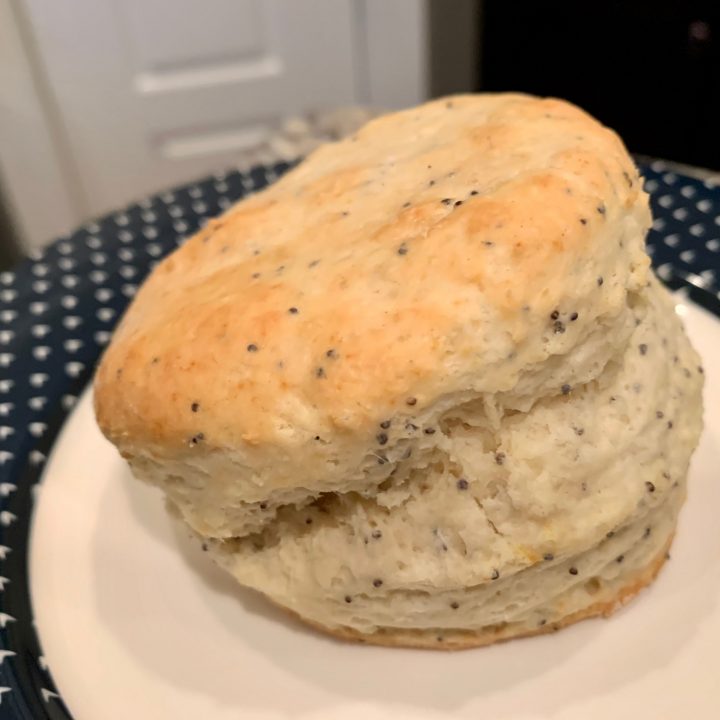Baking can sometimes feel like a daunting task, requiring multiple tools, countless dirty dishes, and ingredients strewn across the countertop. However, with the advent of kitchen appliances like food processors, the process has been revolutionized. Making food processor biscuits is not just simple, but it also cuts down on the time and effort required to achieve delicious baked goods. In this comprehensive guide, we’ll delve into everything you need to know about creating perfect biscuits using a food processor, from choosing the right ingredients to troubleshooting common issues.
The Versatility of Food Processor Biscuits
What are Food Processor Biscuits?
The term “food processor biscuits” refers to biscuits that are prepared using a food processor, a versatile kitchen gadget that can chop, mix, and blend ingredients quickly. This method allows bakers of all skill levels to whip up a batch of biscuits with minimal hassle. Food processor biscuits can be sweet or savory, crumbly or flaky, and they’re perfect for breakfast, snacks, or even as a side for dinner.
Why Use a Food Processor?
Using a food processor to make biscuits provides several benefits:
- Time Efficiency: The rapid chopping and mixing capabilities of a food processor save a significant amount of time.
- Uniformity: The appliance ensures that ingredients are combined evenly, leading to consistent texture and rising.
- Less Mess: Fewer bowls and utensils mean less cleanup after baking.
- Easy Preparation: Quick recipes are amenable to adding variations, making it easy to switch up flavors and ingredients.
Essential Ingredients for Food Processor Biscuits
Getting the right ingredients is essential for the perfect biscuit. While traditional biscuit recipes often call for a set list, the use of a food processor allows for flexibility in ingredient choices.
Flour
Flour is a key component in any biscuit recipe. All-purpose flour is the most common choice, but you can experiment with other types:
- Self-Rising Flour: Contains leavening agents and salt, which can simplify the process.
- Whole Wheat Flour: Adds a nuttier taste and more fiber.
- Gluten-Free Alternatives: If you’re sensitive to gluten, options like almond flour or coconut flour can be used, but may require tweaking other ingredients.
Leavening Agents
Baking powder and baking soda are essential for making biscuits rise. It’s crucial to measure these carefully; too much can cause them to rise too quickly and collapse, while too little will lead to dense biscuits.
Fat
Fat contributes to the flaky texture of biscuits.
- Butter: Offers a rich flavor and ideal texture when cold and cubed.
- Shortening: Produces a tender biscuit that resists spreading.
- Oil: A healthier alternative, though it can change the texture slightly.
Liquid
The liquid activates the dry ingredients and brings your biscuit dough together:
- Milk: Whole milk, buttermilk, or even plant-based options work well.
- Water: Can be used if you prefer a lighter texture.
Additional Ingredients
To elevate your food processor biscuits, consider adding:
- Sugar: For sweetness, especially in dessert biscuits.
- Herbs & Spices: Cinnamon for sweet biscuits or rosemary for savory options.
- Add-ins: Chopped fruits, nuts, or cheese can create unique flavors.
Step-by-Step Process: Making Food Processor Biscuits
Preparing Your Equipment
Before you start, ensure that your food processor is clean and ready to use. The bowl and blade should be dry to avoid any sticky dough.
Step 1: Measure Ingredients
Begin by measuring out all of your ingredients precisely to ensure success. The foundational ratio often recommended for basic biscuits is:
- 2 cups of flour
- 1 tablespoon of baking powder
- ½ teaspoon of salt
- 1/2 cup of cold butter (or fat of choice)
- 3/4 cup of milk
Step 2: Combine Dry Ingredients
Add the flour, baking powder, and salt to the food processor bowl. Pulse a few times to mix thoroughly.
Step 3: Add Fat
Cut the cold butter (or your chosen fat) into cubes and add it to the flour mixture. Pulse the food processor several times until the mixture resembles coarse crumbs. The key is not to overmix; you want pea-sized pieces of fat within the flour.
Step 4: Incorporate Liquid
Slowly pour in the milk while the processor is running on low speed. Stop mixing as soon as the dough just comes together. It should be slightly sticky but not wet.
Step 5: Shape the Dough
Transfer the dough to a floured surface. Gently knead it 4-5 times to bring it together, but avoid overworking it. For even-shaped biscuits, you can roll the dough out to about 1-inch thick and cut it with a biscuit cutter.
Step 6: Bake
Preheat your oven to 450°F (232°C). Place the biscuits on a parchment-lined baking sheet, allowing some space between them. Bake for 12-15 minutes or until the tops are golden brown.
Step 7: Cool and Serve
Once baked, remove them from the oven and let them cool slightly on a wire rack. Serve warm with butter, jam, or gravy, depending on whether they are sweet or savory.
Creative Variations for Food Processor Biscuits
Sweet Biscuits
Sweet biscuits can be customized in numerous ways. Here are a few ideas:
- Chocolate Chip: Add small chocolate chips to the dough or even drizzle melted chocolate on top.
- Fruit & Nut: Fold in berries or dried fruits along with nuts for added texture.
- Cinnamon Sugar: Mix cinnamon and sugar to sprinkle on before baking.
Savory Biscuits
Savory options can be equally delightful:
- Cheddar and Chive: Mix grated cheddar cheese and fresh chives into the dough for a flavorful treat.
- Garlic and Herb: Add roasted garlic and a mix of herbs for an aromatic dough.
- Spicy Jalapeño: Incorporate finely chopped jalapeños for a kick.
Gluten-Free Biscuits
Creating gluten-free biscuits is also straightforward. Substitute traditional flour for a gluten-free blend. Remember to add a binding agent like xanthan gum if your mix doesn’t include it.
Troubleshooting Common Issues
Dense Biscuits
If your biscuits turn out too dense, check the following:
- Overmixing: Handle the dough gently; overmixing activates gluten, leading to a denser texture.
- Incorrect Leavening: Ensure your baking powder or soda is fresh. An expired agent won’t provide the necessary lift.
Biscuits Not Rising
Several factors can contribute to biscuits that refuse to rise:
- Wrong Temperature: The dough should be chilled before baking, as cold fats create steam for rising.
- Flat Dough: If the dough is rolled too thin, biscuits may spread instead of rising.
Undercooked Biscuits
If your biscuits are browned on the outside but raw on the inside, consider these adjustments:
- Oven Temperature: An oven thermometer can help ensure your oven is at the correct temperature.
- Size of Biscuit: Larger biscuits may take longer to cook, so adjust your baking time accordingly.
 Storing and Reheating Food Processor Biscuits
Storing and Reheating Food Processor Biscuits
Storing Leftovers
If you’ve made a batch of biscuits and have leftovers, storing them properly is essential for maintaining their flavor and texture:
- Cool Completely: Let the biscuits cool entirely before storing.
- Use Airtight Containers: Place them in an airtight container at room temperature for up to 2 days or in the fridge for up to a week.
Freezing Biscuits
To maximize freshness, consider freezing:
- Pre-Bake: Freeze unbaked biscuits on a baking sheet until firm, then transfer them to a freezer-safe bag for up to 3 months.
- Baked Biscuits: Baked biscuits can also be frozen. Wrap each individually in plastic wrap and place them in a freezer-safe bag.
Reheating
When you’re ready to enjoy your biscuits again, reheat them in the oven or microwave:
- Oven: Preheat to 350°F (175°C) and bake for 10-15 minutes.
- Microwave: Heat for 10-15 seconds at a time until warm, but be cautious not to overdo it or they may become tough.
Conclusion
Making food processor biscuits is not only an experience that celebrates baking simplicity, but it also encourages culinary creativity. With just a food processor and a handful of ingredients, bakers can whip up a diverse array of biscuits that cater to various tastes and dietary needs. The beauty of food processor biscuits lies not only in their delicious flavor and texture but also in the joy of baking without the stress. So gather your ingredients, fire up your food processor, and explore the delightful world of homemade biscuits today!



